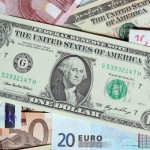The euro advanced to the strongest level in two weeks against the US dollar on speculation for a dovish testimony by Janet Yellen in her first appearance before Congress as head of the Federal Reserve.
EUR/USD hit a session high at 1.3683 at 08:25 GMT, after which the pair traded at 1.3671 at 10:07 GMT, adding 0.19% for the day. Support was likely to be received at February 10th low, 1.3618, while resistance was to be encountered at January 29th high, 1.3685.
Greenbacks demand was pressured as market players expected Janet Yellens first testimony to Congress to be dovish. Investors broadly anticipated a slower stimulus tapering to be announced after a mixed set of data released in the last couple of weeks overshadowed policy makers’ decisions to trim Fed’s bond buying program at their two latest meetings. If Yellen’s testimony proves dovish as forecast, it would certainly weaken the US dollar.
A report by the US Department of Labor revealed on Friday that the non-farm payrolls in the country increased by 113 000 in January, well below experts’ forecasts of an increase to 180 000 and after US employers added 75 000 jobs a month ago, the smallest change since January 2011. Data showed that the small number of added jobs in January was driven by retailers and government agencies as they have cut payrolls at the fastest pace in more than a year, while at the same time construction companies and manufacturers boosted employment.
The lower-than-expected number of non-farm payrolls raised concerns over the uneven recovery of the US economy and fueled speculations that Fed may slow the pace of scaling back stimulus.
However, a separate report revealed the US unemployment fell to 6.6% in January, while analysts projected the jobless rate will remain steady at December’s 6.7% rate. Although data showed that more Americans entered the workforce, the unemployment rate reached the lowest level since October 2008. Nonetheless, the number of people participating in the labor market rose by mere 0.2% to reach 63% in January, rebounding from 62.8%, the the weakest participation rate in almost 30 years, registered in the previous month.
Meanwhile, data showed on Monday, that the French manufacturing output was flat in December, short of analysts’ projections of an increase to 0.3% from November’s 0.2% gain. On year-over-year basis, the nation’s manufacturing output slowed its pace to an annualized rate of 0.5% in December from 1.6% annualized rate in the previous month. Analysts predicted that manufacturing production will increase by 0.7%.
A separate report revealed that the Italian industrial production declined by 0.9% in December, after a 0.3% advance in the preceding month. According to the median analyst’ forecast the index, tracking the activity in the industrial sector, was to remain flat in December. The index plunged at an annualized rate of 0.7%, confounding analysts’ estimates of 0.9% increase. November’s reading was revised upwards to 1.5% increase from prior estimates of a 1.4% gain.
However, the Sentix investor confidence in the euro are reached 13.3 in February, the strongest level since April 2011, defying analysts’ forecasts for a decrease to 10.3 from January’s reading of 11.9. The Sentix investor confidence is an index, which is based on a survey among 2 400 investors and has two-sub-indexes, one that tracks the future economic outlook for a 6-month period ahead and one that tracks the current economic situation. Data revealed that the increase was mainly driven by a gain in the sub-index, which tracks the investor’s assessment of the current situation in the 18-nation common currency area.
Elsewhere, GBP/USD touched a session high at 1.6434 at 00:45 GMT, after which the pair trimmed earlier gains to trade little changed at 1.6412 at 09:08 GMT, adding 0.06% on a daily basis. Support was likely to be received at February 10th low, 1.6383, while resistance was to be met at February 3rd high, 1.6438.





